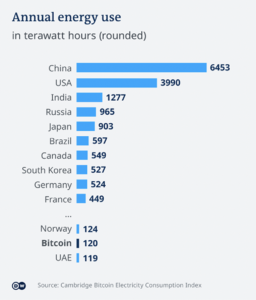In recent years the topic of renewable energy aggregation has dominated industry news and many suppliers are now lowering the barrier of entry for first-time buyers. Those new to renewable energy are looking to better understand the need and components of an aggregation strategy.
Energy aggregation is when a group of smaller companies or local institutions partner together to buy energy from a supplier while retaining the economic advantages of a high-volume purchase.
The term is widely used to describe bulk purchases of renewables from wind, solar and hydro-power projects. Unless an organization has the finances and energy demands of a large company like Microsoft, Apple, or IKEA, purchasing renewables isn’t a viable option without aggregating a group of smaller buyers together.
Energy aggregation is the alternative for companies looking to purchase renewable energy on a smaller scale. This is especially important during a time when about half of Fortune 500 have committed to achieving clean energy targets. Energy aggregation can be separated into two definitions as they apply to each side of the transaction – project aggregation and buyer aggregation.
Project aggregation is creating a portfolio of projects which blends a diverse range of renewable energy projects together. This method allows buyers to transact with less risk and get access to a higher value product in one transaction, instead of buying into different projects across multiple transactions. Think of project aggregation as investing in an index fund versus a single stock, reducing the overall risk of a renewable energy purchase.
Buyer aggregation references when several energy buyers combine their efforts and increase their buying power. While leading energy buyers like Google and Amazon purchase a wide range of projects with greater regularity due to their massive energy needs, superior financial standing, and familiarity with the procurement process, the vast majority of buyers do not have this advantage. Aggregating smaller buyers together allows access to a similar range of projects as a larger entity would and at an affordable price.
Looking Beyond Corporate Buyers: Another Type of Energy Aggregation
In addition to corporations collaborating to purchase renewable energy, community choice aggregation (CCA) is another type of energy aggregation program gaining momentum. Community choice aggregation is also known as government energy aggregation, municipal electricity choice, community energy aggregation, community solar or wind programs and municipal energy aggregation.
CCA programs allow residents and local institutions, like municipalities, hospitals, and universities to bid as a group on renewable energy projects. As an alternative to sourcing energy from the utility servicing a region, the goal is to pool a group’s buying power for greater savings on renewables.
The Key Benefits of Energy Aggregation
One of the primary benefits of aggregation is the cost savings since multiple companies partnering together can contract a much larger project than an individual member alone.
A group of buyers have greater buying power, providing them access to larger projects and a more diverse range of options to suit their needs. Selecting a larger project that takes on the demand of multiple partners, reduces the energy pricing for buying the commodity at a higher volume.
Risk management is the other key benefit of aggregation as investing in a portfolio of energy projects with partners limits a company’s exposure to associated risks.
Whether these risks are developmental, market related, or operational, each can stall the progress of a project’s construction or reduce its output once completed. If a project never makes it to operations, the financial burdens could significantly disrupt a buyer’s progress toward buying clean power.
Aggregation diminishes these risks to a portfolio’s execution as the consequences are distributed to each buyer in the group limiting the financial downsides per partner. Investing in a portfolio of multiple energy projects helps to ensure it consistently provides the agreed upon load and diminishes the impact of a project underperforming or potentially going offline entirely.
The Challenges of Energy Aggregation
The most common challenge of an energy aggregation program is coordinating the stakeholders from each company to meet their particular requirements and approvals. These inconsistencies in procedures and the nuances of each partner have the ability to stall the already lengthy process of completing a transaction to purchase energy.
Matching supply with demand is another challenge to the energy aggregation approach as project developers often want to sell the full output from their project, not a portion. Advisors well versed in aggregation work closely with developers to express the value of a group purchase and the reduced risks of the portfolio approach for both parties.
The credit of smaller buyers is another challenge as developers weigh the financial risks of working with a company partially based on their credit rating to determine their energy pricing. Most companies participating in a portfolio have below investment grade credit, which is why some developers associate a risk premium selling to these organizations and others avoid transactions at this level altogether deeming these deals too risky. Solving for the credit needs of smaller buyers often involves bringing in an intermediary like an investment grade credit entity to back a buyer, reducing the risk for developers.
An Example of Project Aggregation in Action
The partnership between Google, AkzoNobel, DSM and Philips on joint wind projects in the Netherlands is a prime example of a successful energy aggregation program.
According to a case study by the Rocky Mountain Institute, these distinct companies aggregated their electricity demand to form a partnership known as the Dutch Wind Consortium.
The consortium’s ability to work together not only reduced energy pricing per project but saved time and resources for a streamlined process.
Selecting the right companies to work with is crucial to the success of a buyer group when navigating the project aggregation process, which is why it’s important to choose partners that:
- Share similar goals and are committed to sharing the workload.
- Align culturally with shared values and passions to ensure collaboration.
- Command credibility in their industry because of their strong reputation.
One technique that helped the consortium navigate energy procurement was assigning specific tasks to each partner aligned with their experience and expertise. As part of their agreement, AkzoNobel handled communications, DSM and Google managed legal tasks, and Philips oversaw accounting. This approach of dividing responsibilities to support the long-term success of their energy aggregation program kept all partners engaged and invested in the success of the endeavor.
Despite energy aggregation having many layers and potentially appearing complex to a first-time participant, it is undoubtedly a foundational component to ensure renewable energy procurement reaches scale.
Stronger Together
Local communities are allowed, by law in many states, to join their citizens together to buy natural gas and/or electricity as a group and thereby gain buying power to solicit the lowest price for the group’s natural gas and electricity needs.
In addition to procurement aggregation, the use of clean energy sources, such as water, wind, sun, and nuclear, to generate electricity helps to reduce greenhouse gas emissions and mitigate climate change. This is because clean energy sources don’t emit any greenhouse gases, such as carbon dioxide, during the electricity generating process.
What to do next?
- Partner with like-minded organizations buying renewables with the assistance of market experts.
- Energy buyers and developers can request access to see what renewable projects are available.
Contact Us
"*" indicates required fields






